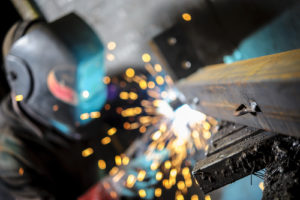Aluminum castings are extremely lightweight and they are capable of withstanding exposure to high operating temperature for a longer period of time. These are just a few reasons why die casters love to work with aluminum and its alloys. The exceptional properties of aluminum alloys have allowed die casters to produce high quality finished products with superior performance. Below are some of the fascinating characteristics of aluminum alloys.
- Lightweight
- Excellent strength to weight ratio
- Excellent RFI and EMI shielding properties
- High electrical conductivity
- Greater thermal conductivity
- Recyclable
- High corrosion resistance
The heat dissipation and corrosion resistance properties of aluminum alloys, which is combined with its greater strength offer significant advantages to die casters. The casting process for aluminum and its alloys are usually called as mould casting or ingot casting by both die casters and customers.
The finished products that are obtained by die casting aluminum are used in a wide variety of infrastructure and networking equipment in computing and telecom industries. The excellent shielding properties and electrical performance of die cast aluminum products have made them ideal for using in electronic housings and connectors. Besides, the use of aluminum has also helped in weight saving requirements, which has dramatically improved the fuel efficiency of automobiles.
Mold Casting
In the process of mould casting, aluminum alloys are cast into a wire bar ingot, extrusion ingot, and rolling ingot, and then gradually transformed into finished products with excellent mechanical properties. This method is usually preferred by die casters because it enables them to produce high-quality finished products with ease.
In some cases, the alloys of aluminum might not be able to undergo mould casting. If that is the case, then die casters incorporate the use of sand casting or die casting to bring the desired results to their finished products. However, the downfall is that the finished products obtained through most of these casting methods contain a few defects. Some of the commonly seen defects in aluminum die castings are as follows.
Casting Defects Due to Equipment

Mold Casting Factors
Mold or Mismatch Shift
This casting defect arises when the bottom and top parts of the finished product or casting does not match at the mold joint. This happens because of the use of loose, bent, or worn out molding box clamping pins and dowels. However, professional die casters who have access to modern tools and pieces of machinery will not experience such casting effects.
Wall Thickness Variations
In some cases, you will be able to see that the wall thickness of the casting is not equal. This issue usually arises because the worn core print lets a core to move or float during the casting process. In addition to that, some worn boxes might also give oversize core dimension to die casters, which may also result in such casting issues.
Fins and Flash
Flash and fins usually appear on the parting lines of the metal or at the mild joint of the casting. If the pattern plates fail to stay straight during the process of ramming, then the chances of fins and flash to appear are considerably high. Apart from that, if the taper in the pattern is insufficient, then also there is a chance for the occurrence of flash and fins.
Defects Due to Improper Molding
Blowholes
Blowholes can be defined as the rough holes that are visible on the surface of the castings. Blowholes that are present on the casting surface are usually in the form of clusters. This casting defect is due to the presence of excess moisture in the sand used for molding. However, it might happen due to the inadequate venting of the mold.
Drop
A small piece of the molded sand may fall into the molten metal if there happens to be any damages or cracks in the cope surface of the component or die. This casting effect is usually known as drop and it happens due to soft ramming and low hardness of the mold. However, you will be able to avoid such issues by ensuring that there is sufficient hardness in the mold.
Scab
Scab is a common casting defect, which occurs when a small portion of the mold lifts and allows metals to flow underneath the surface. Scab defect usually appears in finished die casting products due to the low permeability of the molding sand. Apart from that, uneven ramming of the mold and high moisture concentration of the molding sand might also result in this casting defect.
It is significant to note that some of these defects do not affect the quality of the finished product. Moreover, if you are working with a reliable or professional die casting company, then the chances for the occurrence of such die casting defects are very rare.
